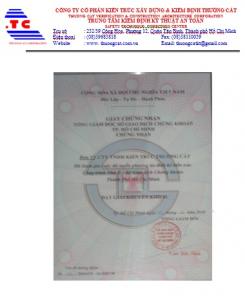News
adv left
Architects explain why many apartments flood when it rains
Hanoi's Old Quarter was flooded after rain.
In the past two weeks, Hanoi has had 4 heavy rains, all of which have flooded many streets from 20cm to 40cm deep. On the afternoon of May 27, the rain lasted for more than an hour, making more than 10 streets of Hanoi submerged in water.
The first rain of the season on the evening of May 12 between 20h and 21h30, but this rain has flooded most of the streets in the inner city district. The streets of Nguyen Trai, Truong Chinh, Giai Phong, Pham Van Dong, Tran Duy Hung... were flooded with more than half of the wheels of motorbikes and cars. Streets: To Hieu, Ba Trieu (Ha Dong), Pham Van Dong, Duong Dinh Nghe (Cau Giay)... flooded to the seat of motorbikes.
Many apartment buildings, high-rise buildings and villas, especially urban areas, are located along roads such as Thang Long Boulevard, Long Le Van Luong Boulevard, Ring Road 3, Road 70... every time it rains, it floods. Particularly in urban areas of Geleximco, South and North An Khanh (along Thang Long Boulevard), Vinaconex 3, Duong Noi, An Hung (longside Le Van Luong)... it gets flooded every time it rains.
Architect Pham Thanh Tung, Chief of Office of the Vietnam Association of Architects, said that, in principle, urban areas must have wastewater collection and treatment areas, including surface rainwater. For example, if it is low, there must be a booster pump system, pushing the water outside. However, many urban areas are "eaten away" by investors for items including drainage.
As proof of this, Mr. Tung said that in urban planning, when building an urban area, the investor must leave at least 20% of the area to make a reservoir, roads and green parks, but Currently counting on fingers, there are a few urban areas in Hanoi that have an air conditioner. This is the main reason why the urban areas of rain are flooded quickly and receded slowly.
Mr. Le Vu Quang Suong, Deputy General Director of Hanoi Sewerage Company, said that there are 15 flooded points in Hanoi city.
Referring to the flooding situation in apartment buildings and urban areas, Mr. Suong said that currently, the above areas only have internal drainage systems, no drainage system to the outside.
According to Mr. Suong, in principle, when constructing the above works, the investor must be responsible for coordinating with the local government and relevant units to find solutions, including equipping the system. Forced pumping when the outside water level is higher than the water in the urban area.
Building an apartment building must also consider water drainage as fire protection; Only guaranteed electricity and water are allowed to be put into operation... However, at present, most of the apartment buildings and new urban areas, investors are only interested in commercial infrastructure, leaving the system unattended for life. people's lives, including drainage.
News other
- Suburban house for 3-generation family with rice drying yard on the upper floor(04/10/24)
- Catch the sun in the townhouse(04/10/24)
- 3-storey house designed for three-generation families(23/05/24)
- Fall in love with the open, dark-toned villa design in Binh Duong(22/05/24)
- Impressed with the 5-storey townhouse design that is always airy(22/05/24)
- Furnished 3-bedroom apartment is only 330 million VND, surprisingly beautiful inside(16/05/24)
- The house designed two skylights to help circulate air(16/05/24)








